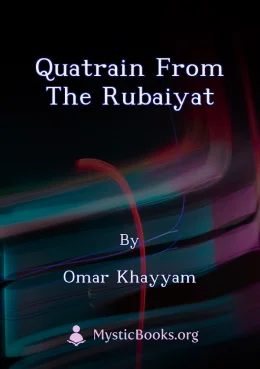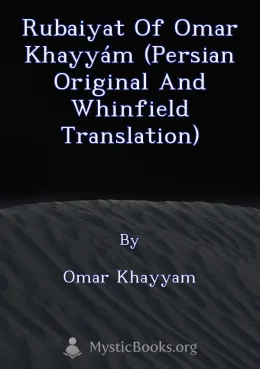
Timeline
Title
Country/Nationality
Omar Khayyam
Omar Khayyam was a Persian polymath, mathematician, astronomer, philosopher, and poet. He was born in Neyshabur, in northeastern Persia, and was contemporary with the rule of the Seljuks around the time of the First Crusade.
As a mathematician, he is most notable for his work on the classification and solution of cubic equations, where he provided geometric solutions by the intersection of conics. Khayyam also contributed to the understanding of the parallel axiom. As an astronomer, he designed the Jalali calendar, a solar calendar with a very precise 33-year intercalation cycle that provided the basis for the Persian calendar that is still in use after nearly a millennium.
There is a tradition of attributing poetry to Omar Khayyam, written in the form of quatrains (rubāʿiyāt رباعیات). This poetry became widely known to the English-reading world in a translation by Edward FitzGerald (Rubaiyat of Omar Khayyam, 1859), which enjoyed great success in the Orientalism of the fin de siècle.
Omar Khayyam was born in 1048 in Nishapur, a leading metropolis in Khorasan during medieval times that reached its zenith of prosperity in the eleventh century under the Seljuq dynasty. Nishapur was also a major center of the Zoroastrian religion, and it is likely that Khayyam's father was a Zoroastrian who had converted to Islam. His full name, as it appears in the Arabic sources, was Abu’l Fath Omar ibn Ibrahim al-Khayyam. In medieval Persian texts he is usually simply called Omar Khayyam Although open to doubt, it has often been assumed that his forebears followed the trade of tent-making, since Khayyam means tent-maker in Arabic. The historian Bayhaqi, who was personally acquainted with Omar, provides the full details of his horoscope: "he was Gemini, the sun and Mercury being in the ascendant[...]". This was used by modern scholars to establish his date of birth as 18 May 1048.
His boyhood was spent in Nishapur. His gifts were recognized by his early tutors who sent him to study under Imam Muwaffaq Nishaburi, the greatest teacher of the Khorasan region who tutored the children of the highest nobility. Omar made a great friendship with him through the years.
Khayyam was also taught by the Zoroastrian convert mathematician, Abu Hassan Bahmanyar bin Marzban. After studying science, philosophy, mathematics and astronomy at Nishapur, about the year 1068 he traveled to the province of Bukhara, where he frequented the renowned library of the Ark. In about 1070 he moved to Samarkand, where he started to compose his famous treatise on algebra under the patronage of Abu Tahir Abd al-Rahman ibn ʿAlaq, the governor and chief judge of the city. Omar Khayyam was kindly received by the Karakhanid ruler Shams al-Mulk Nasr, who according to Bayhaqi, would "show him the greatest honour, so much so that he would seat [Omar] beside him on his throne".
In 1073–4 peace was concluded with Sultan Malik-Shah I who had made incursions into Karakhanid dominions. Khayyam entered the service of Malik-Shah in 1074–5 when he was invited by the Grand Vizier Nizam al-Mulk to meet Malik-Shah in the city of Marv. Khayyam was subsequently commissioned to set up an observatory in Isfahan and lead a group of scientists in carrying out precise astronomical observations aimed at the revision of the Persian calendar. The undertaking began probably in 1076 and ended in 1079 when Omar Khayyam and his colleagues concluded their measurements of the length of the year, reporting it to 14 significant figures with astounding accuracy.
After the death of Malik-Shah and his vizier (murdered, it is thought, by the Ismaili order of Assassins), Omar fell from favor at court, and as a result, he soon set out on his pilgrimage to Mecca. A possible ulterior motive for his pilgrimage reported by Al-Qifti, was a public demonstration of his faith with a view to allaying suspicions of skepticism and confuting the allegations of unorthodoxy (including possible sympathy to Zoroastrianism) leveled at him by a hostile clergy. He was then invited by the new Sultan Sanjar to Marv, possibly to work as a court astrologer. He was later allowed to return to Nishapur owing to his declining health. Upon his return, he seems to have lived the life of a recluse.
Omar Khayyam died at the age of 83 in his hometown of Nishapur on 4 December 1131, and he is buried in what is now the Mausoleum of Omar Khayyam. One of his disciples Nizami Aruzi relates the story that sometime during 1112–3 Khayyam was in Balkh in the company of Al-Isfizari (one of the scientists who had collaborated with him on the Jalali calendar) when he made a prophecy that "my tomb shall be in a spot where the north wind may scatter roses over it". Four years after his death, Aruzi located his tomb in a cemetery in a then large and well-known quarter of Nishapur on the road to Marv. As it had been foreseen by Khayyam, Aruzi found the tomb situated at the foot of a garden-wall over which pear trees and peach trees had thrust their heads and dropped their flowers so that his tombstone was hidden beneath them.
Books by Omar Khayyam

A Rubaiyat Miscellany
The translation of the Rubaiyat of Omar Khayyam by Edward Fitzgerald has remained the most celebrated rendering in English of the Persian poet's work. While several other scholars produced their own translations of the Rubaiyat, yet others contented...

Quatrains of Omar Khayyam of Nishapur
Rubáiyát of Omar Khayyám is the title that Edward FitzGerald gave to his 1859 translation from Persian to English of a selection of quatrains (rubāʿiyāt) attributed to Omar Khayyam (1048–1131), dubbed "the Astronomer-Poet of Persia".

The Rubaiyat of Omar Khayyam
Rubáiyát of Omar Khayyám is the title that Edward FitzGerald gave to his 1859 translation from Persian to English of a selection of quatrains (rubāʿiyāt) attributed to Omar Khayyam (1048–1131), dubbed "the Astronomer-Poet of Persia".

A Third Rubaiyat Miscellany
Dive into the depths of human wisdom and experience with Omar Khayyám's A Third Rubaiyat Miscellany, a collection of quatrains that explore the mysteries of life, death, and love. Omar Khayyám was a Persian polymath, philosopher, mathematician, astr...

Rubáiyát of Omar Khayyám (Fitzgerald)
"Rubaiyat of Omar Khayyam (Persian: رباعیات عمر خیام). The Rubáiyát (Arabic: رباعیات) is a collection of poems, originally written in the Persian language and of which there are about a thousand, attributed to the Persian mathematician and astronomer...

Rubáiyát of Omar Khayyám (Fitzgerald 5th edition)
The Rubáiyát of Omar Khayyám is a collection of quatrains, a specific type of two-line stanza, originally written in Persian by the 11th-century polymath Omar Khayyám. The work explores themes of life, death, knowledge, and the search for meaning in...

Quatrain from the Rubaiyat
This book presents a single quatrain from the Rubaiyat of Omar Khayyam, translated by Henry George Keene. Keene's translation, while lesser known than Edward Fitzgerald's, offers a different perspective on the famous Persian poet's work. Instead of...

Rubaiyat of Omar Khayyám (Persian original and Whinfield translation)
This bilingual recording of Omar Khayyam's Rubaiyat features 500 quatrains in both Persian and English translation. While listeners unfamiliar with Persian will not be able to appreciate the meaning of the quatrains in their original form, everyone c...

Quatrain
This book presents the first known English translation of a quatrain by the renowned Persian poet Omar Khayyám. Originally published in 1771 as part of Sir William Jones's "A Grammar of the Persian Language," this translation offers a glimpse into th...

Rubáiyát of Omar Khayyám (Le Gallienne)
The Rubáiyát of Omar Khayyám is a collection of quatrains, or four-line poems, attributed to the 11th-century Persian poet Omar Khayyám. The poems are characterized by their fatalistic and hedonistic themes, and they have been translated into many la...

Rubáiyát of Omar Khayyám (Le Gallienne) - Version 2
The Rubáiyát of Omar Khayyám is a collection of poems attributed to the 11th-century Persian poet Omar Khayyám. The poems are quatrains, each consisting of four lines of iambic tetrameter, and are known for their philosophical and hedonistic themes....

Quatrains of Omar Khayyám in English Prose
The Rubáiyát of Omar Khayyám is a collection of poems attributed to Omar Khayyám, a Persian poet, mathematician, astronomer, and philosopher. The poems are quatrains, each consisting of four lines, and are known for their hedonistic and existential t...

Strophes of Omar Khayyám
This collection of 152 quatrains, translated by John Leslie Garner in 1888, offers a unique interpretation of Omar Khayyam's famous works. Garner's translation is characterized by a gentle melancholy, contrasting with the more exuberant style of Fitz...

Multilingual Rubaiyat
This book presents a collection of translations of Omar Khayyam's *Rubaiyat*, a famous collection of Persian poetry. It features translations from various languages, including French, Italian, German, Spanish, and Dutch, based on different editions...